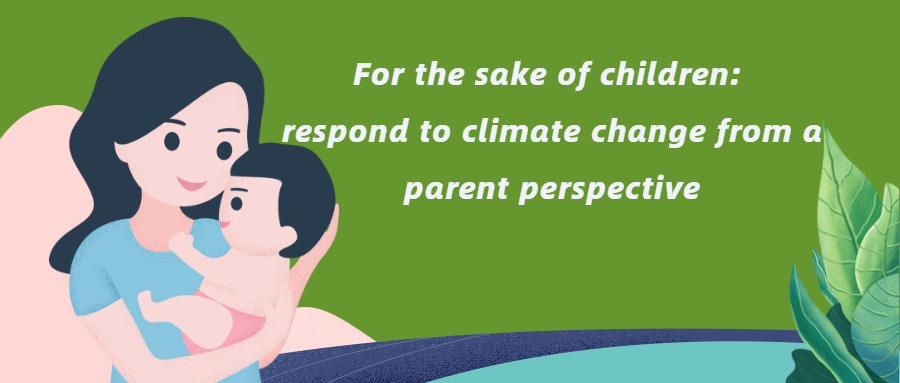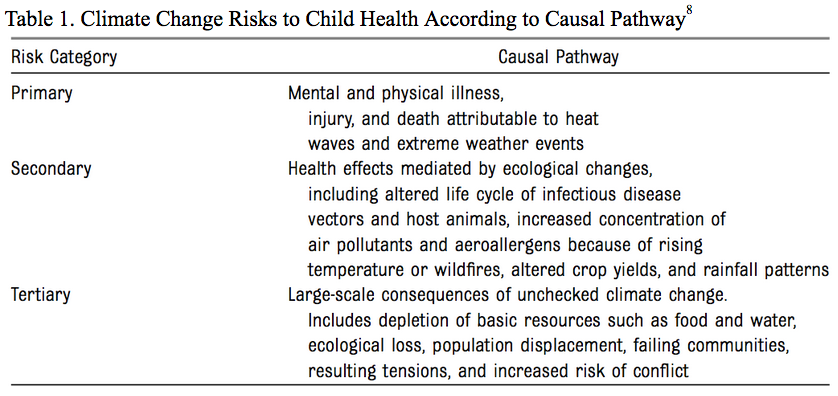As long as it's about children, parents do their best. To ensure their children eat healthy, a working mother who seldom cooked can become a cooking master; in order to give their children a greater chance to enter a famous university, parents would rather to bear a huge financial burden to buy school district houses. Children are not only the hope of parents, but also the future1 of the whole society and the country. For this reason, the state continues to increase investment in education, and issues policies to protect the physical and mental health of minors. Then, what about the challenge of climate change, which is considered as one of the most important public health threats faced by all children at present and in the future, how do parents choose?
On November 14, the Lancet, the world's top medical journal, released The 2019 report of The Lancet Countdown on health and climate change: ensuring that the health of a child born today is not defined by a changing climate (hereinafter referred to as the "Lancet Report"), placing children's health at the forefront. It also analyzes two scenarios:
Under the “business as usual” scenario, a child born today will probably live in a world that is more than four degrees warmer than the pre-industrial average. Their infancy, adolescence, adulthood and old age will be affected by climate change, including malnutrition caused by the decline of food production, increased transmission of infectious diseases such as diarrhea, dengue fever and vibrio, increased air pollution and extreme weather events, and greater exposure to high temperatures and heat waves2.
Under the low-carbon development scenario, if the Paris Agreement is achieved to control the global average temperature rise in this century within 2℃, a child born today would see the phase-out of all coal in the UK and Canada by their 6th and 11th birthday; would see France ban the sale of petrol and diesel cars by their 21st birthday; and they would be 31 years old by the time the world reaches net-zero in 2050. This low-carbon development pathway could bring cleaner air, safer cities and more nutritious food, as well as more investment in health system and important infrastructure, so that under this scenario, the health level of a child born today will be higher than that of the “business as usual” scenario through their life3.
Children are at higher health risk of climate change than adults. In 2015, the American Academy of Pediatrics published a Global Climate Change and Children's Health report, which comprehensively discussed the impact of climate change on children's physical and mental health. According to the report, children are at the stage of growth and development, with higher exposure to air, food and water per unit body weight, as well as unique behavior patterns and dependence on caregivers, making them particularly vulnerable to climate change. It is estimated that 88% of the existing global burden of disease attributable to climate change occurs in children younger than 5 years old in both industrialized and developing countries. However, compared with other health burden, the global health burden caused by climate change is poorly quantified4.
The impact of climate change on children's health includes not only the direct health damage caused by heat wave and extreme weather, but also the long-term and far-reaching impact on children's physical and mental health by changing the ecological environment on which human beings live and destroying families, schools and communities.
After Hurricanes Katrina and Rita, more than 5000 children were separated from their families, some of whom were reunited with their families until months later. On average, children displaced by Hurricane Katrina experienced 3 moves per child. Some believe that a child needs 4 to 6 months for academic recovery after a move that results in a change in schools. The displaced students also experienced various problems related to attendance, academic performance, behavior and mental health5.
Children are particularly vulnerable to air pollutants. Children’s smaller diameter airways are more likely to be affected by inflammation produced by air pollution; they breathe more air per unit of body weight than adults, and thus receive proportionately higher doses of pollutants6. Air pollution has a major common source with greenhouse gas, which is fossil fuel, particularly coal. China has implemented stringent air quality protection polices since 2013, including phasing out highly polluting coal capacity, and the coal consumption in China declined for three consecutive years after 2013; but the downward trend of coal use reversed in 2017 and 20187.
Looking back at the two scenarios mentioned above, it is not difficult to distinguish which is more beneficial to children's health from the “business as usual” scenario and "low-carbon development" scenario. The key is to recognize the urgency of climate change, and take urgent and effective measures. The Lancet Report indicates that progress in mitigating climate change threat is intermittent at best, and many of the indicators contained in the report suggest the world is following the “business as usual” pathway9. If the health benefits of coping with climate change is thoroughly assessed and acknowledged, the critique on the acceleration of low-carbon transformation would become pale.
The Lancet Report has highlighted health sector’s important role in coping with climate change challenge. As the health guardian in face of health impacts caused by climate change, health sector can also take proactive action to mitigate climate change by reducing its own carbon footprint. Health professionals are trusted by the public and should engage with media to further raise awareness of the linkage between health and climate change, as well as ways to bring about positive change10.
From December 2 to 13, 2019, the United Nations climate change negotiation (COP25) will be held in Madrid, Spain. When policy makers discuss the implementation of the Paris Agreement action plan, we hope that climate change and health could receive more attention, and that adults who participate in the negotiation will think more about young generations, as if parents thinking about their children, show leadership and dare to undertake responsibilities.###
Written by Chao Jiang
Edited by Ang Zhao
To View the Chinese Version, please click: https://mp.weixin.qq.com/s/tYSGfC8GmDmXYOotySqkeQ

